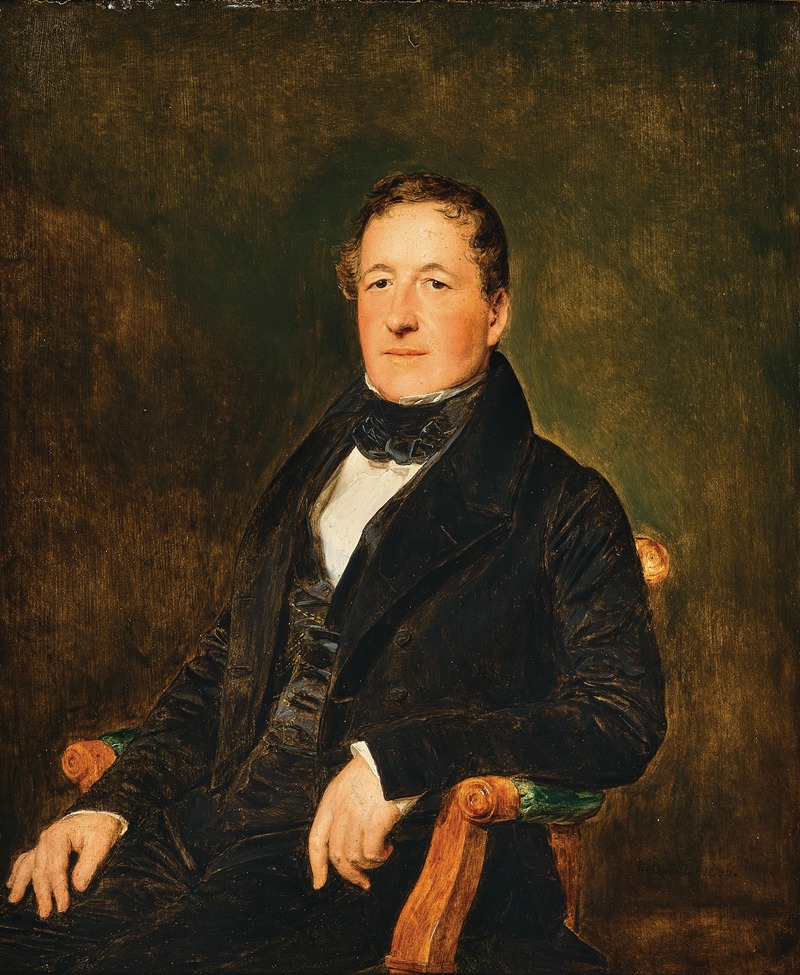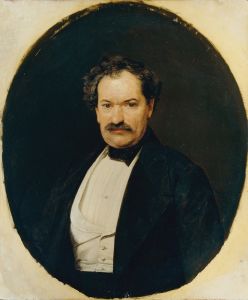
Portrait of Friedrich Eltz
A hand-painted replica of Ferdinand Georg Waldmüller’s masterpiece Portrait of Friedrich Eltz, meticulously crafted by professional artists to capture the true essence of the original. Each piece is created with museum-quality canvas and rare mineral pigments, carefully painted by experienced artists with delicate brushstrokes and rich, layered colors to perfectly recreate the texture of the original artwork. Unlike machine-printed reproductions, this hand-painted version brings the painting to life, infused with the artist’s emotions and skill in every stroke. Whether for personal collection or home decoration, it instantly elevates the artistic atmosphere of any space.
Ferdinand Georg Waldmüller was a prominent Austrian painter of the 19th century, renowned for his contributions to the Biedermeier period, a time characterized by a focus on realism and detail in art. One of his notable works is the "Portrait of Friedrich Eltz," which exemplifies his skill in capturing the essence and character of his subjects.
Waldmüller was born in Vienna in 1793 and became one of the leading figures in Austrian art. His works often depicted everyday life, landscapes, and portraits, showcasing his keen eye for detail and his ability to convey the subtleties of human expression. The "Portrait of Friedrich Eltz" is a testament to his mastery in portraiture, a genre in which he excelled.
The subject of the painting, Friedrich Eltz, belonged to the noble Eltz family, a lineage with a rich history in Europe. The Eltz family is known for their ancestral home, Eltz Castle, located in Germany, which has been in their possession for over 800 years. The family's prominence and influence in European history make Friedrich Eltz a figure of interest, although specific details about his life and accomplishments are less documented.
In the portrait, Waldmüller employs his characteristic style, focusing on realism and attention to detail. The painting captures Eltz with a sense of dignity and presence, reflecting the status and character of the sitter. Waldmüller's use of light and shadow, as well as his meticulous attention to the textures of clothing and skin, bring the portrait to life, making it a striking example of 19th-century portraiture.
Waldmüller's portraits are celebrated for their lifelike quality and the way they convey the personality of the sitter. In the "Portrait of Friedrich Eltz," Waldmüller demonstrates his ability to depict not just the physical appearance but also the inner life of his subject. This skill is what sets his work apart and has earned him a lasting place in the history of art.
Throughout his career, Waldmüller faced various challenges, including shifts in artistic trends and political changes in Europe. Despite these challenges, he remained committed to his style and continued to produce works that were both popular and critically acclaimed. His dedication to realism and his ability to capture the human experience in his art have made his works enduringly popular.
Today, Waldmüller's paintings, including the "Portrait of Friedrich Eltz," are held in high regard and can be found in museums and private collections around the world. They continue to be studied and admired for their technical brilliance and their insight into the society and culture of 19th-century Europe.
In summary, the "Portrait of Friedrich Eltz" by Ferdinand Georg Waldmüller is a significant work that highlights the artist's exceptional talent in portraiture. It reflects the historical context of the time and offers a glimpse into the life of a member of the European nobility. Waldmüller's legacy as a master of realism and his contribution to the Biedermeier period remain influential in the art world today.


















